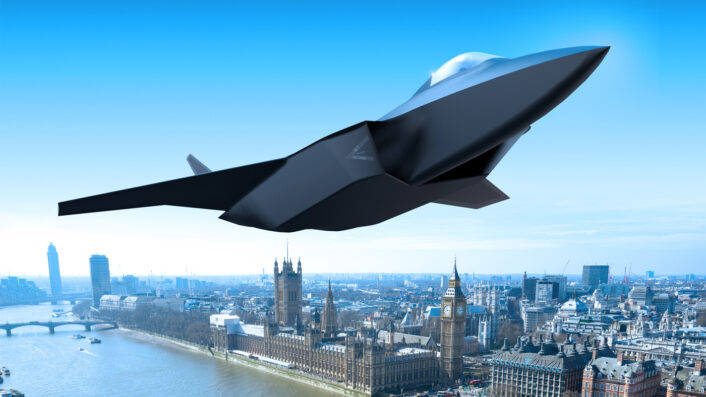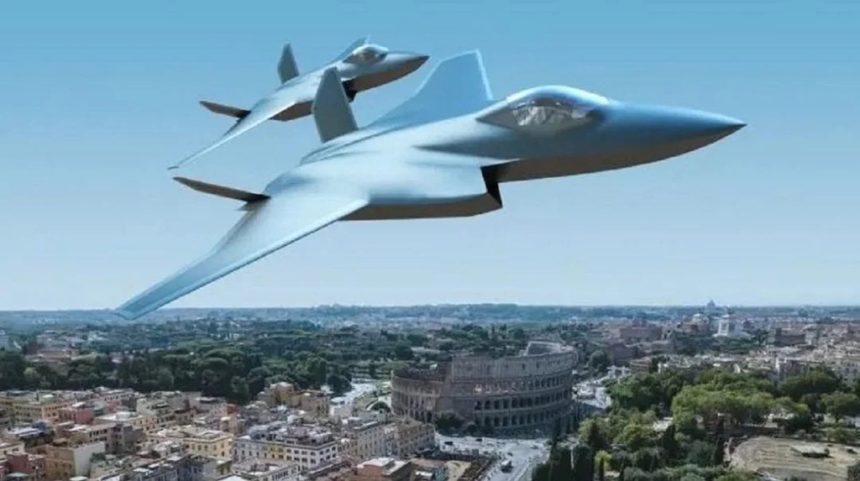Japan, U.K. and Italy announced the plan to joint develop a next-gen fighter as part of Global Combat Air Program (GCAP).
On Dec. 9, 2022, the Governments of Japan, UK and Italy have announced the launch of the GCAP (Global Combat Air Programme) which aims to develop a next-generation fighter aircraft, to be operational by 2035.
GCAP sees the convergence of the F-X and Tempest programs, for what deals the development of technologies for the sixth generation combat aircraft that will operate within a system of systems concept (or FCAS – Future Combat Air System), that also includes UCAVs/loyal wingmen and cyber capabilities. The three nations, through their national industry leads Leonardo, BAE Systems and Mitsubishi Heavy Industries, will collaborate as part of a joint venture that was in the air for some time actually. Interestingly, while the UK led Tempest and Japan led F-X, the GCAP will have no lead nation or company.
As heralded, #UK, #Italy, and #Japan have merged their #Tempest and F-X future fighter projects into the Global Combat Air Programme (#GCAP). With a @JanesINTEL story inbound, a short thread of some key points… 1/7 pic.twitter.com/2xUzIUBZE8
— Gareth Jennings (@GarethJennings3) December 9, 2022
The three partner nations will now have to agree the cost-sharing arrangements based on a joint assessment of costs and national budgets and then establish the core platform concept whose development should start in 2025.

“As Heads of Government of Italy, Japan and the United Kingdom, we are committed to upholding the free and open rules-based international order, which is more important than ever at a time when these principles are being challenged and threats and aggression are mounting. As the defense of our democracy, our economy, our security and regional stability is ever more important, we need strong defense and security partnerships, underpinned and reinforced by a credible deterrence capability,” says the joint statement issued today.
“Our three nations have a close and long-standing relationship based on the values of freedom, democracy, human rights and the rule of law. We are today taking the next step in strengthening our trilateral partnership. We announce the Global Combat Air Program (GCAP), an ambitious project aimed at developing a next-generation fighter aircraft by 2035.”
“Through the GCAP, we will further develop our long-standing defense relationships. The GCAP will accelerate our advanced military capabilities and technological edge. It will deepen our defense cooperation, science and technology collaboration, integrated supply chains, and further strengthen our defense industrial base.”
“This program will produce wide-ranging economic and industrial benefits, supporting employment in Italy, Japan and the United Kingdom. It will attract R&D investment in digital design and advanced manufacturing processes. It will provide opportunities for the next generation of highly skilled technicians and engineers. By working together in a spirit of equal partnership, we share the costs and benefits of this investment in our people and technologies. The program will support the sovereign ability of all three countries to design, supply and upgrade state-of-the-art defense air capabilities, with an eye to the future.”
“This program was designed with our Allies and partners in mind. Future interoperability with the United States, NATO and our partners in Europe, the Indo-Pacific and globally is reflected in the name we have chosen for our program. This concept will be at the heart of its development. We share the ambition to make this aircraft the centerpiece of a larger air combat system that will operate in multiple domains.”
“Our hope is that the Global Combat Air Programme, and through it our partnership in developing our respective capabilities, will be a cornerstone of global security, stability and prosperity in the decades to come.”

The trilateral agreement marks the first time Tokyo cooperates with countries other than the United States in a major defense programme.
As we have already explained here at The Aviationist, the UK, Italy and Sweden signed a trilateral Future Combat Air System Cooperation Memorandum of Understanding on Dec. 21, 2020, which covers the cooperation for research, development and joint concepting of the FCAS. Most of the media attention and updates deal on just the 6th generation aircraft (also referred to as the “core plaftorm”) but FCAS combines multi-domain assets, that will cooperate in a MUM-T (Manned Unmanned Teaming) scenario and will be interconnected through a secure cloud network; technologies that are being designed today by the industry partners to meet the capability requirements of future conflicts and be operational in the mid-2030s.
The new 6th generation aircraft developed by Japan, Italy and the UK will replace the JASDF (Japan Air Self Defense Force) F-2 fighters as well as the Italian and Royal Air Force Eurofighter fleets; Sweden is interested in the whole SoS (System of Systems) rather than the “core platform” considered the investments and effort put on the Gripen E aircraft.
Although both the UK and Italy have grown a significant industrial agreement in the Eurofighter program and both, along with Japan, have a role in the F-35 program, the development of a sixth generation aircraft is, at least, a very ambitious task. For this reason, the currnet plan to bring the next gen. fighter into service by 2035 seems a bit optimistic, but we’ll see.









